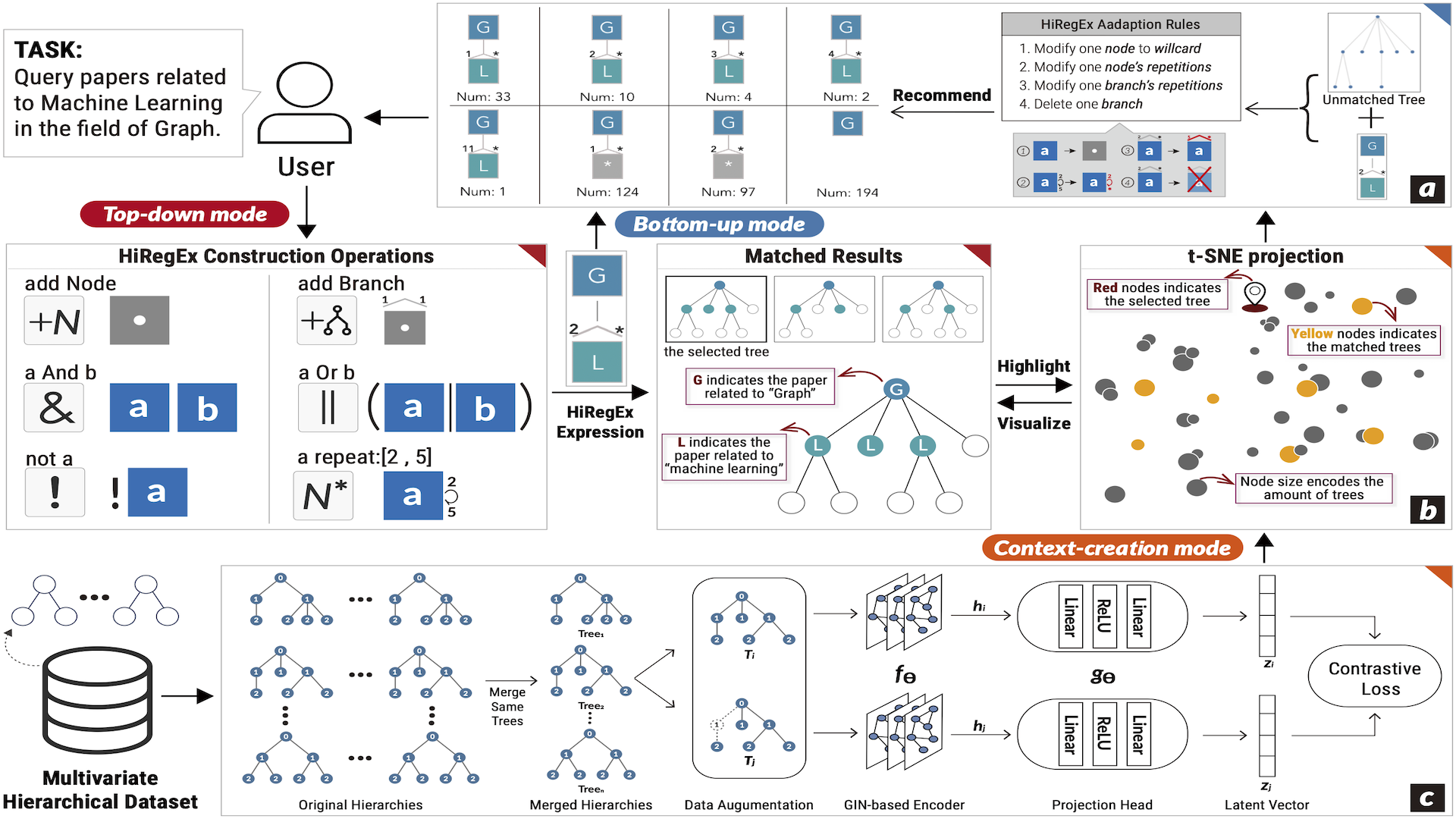HiRegEx: Interactive Visual Query and Exploration of Multivariate Hierarchical Data
Guozheng Li - Beijing Institute of Technology, Beijing, China
haotian mi - Beijing Institute of Technology, Beijing, China
Chi Harold Liu - Beijing Institute of Technology, Beijing, China
Takayuki Itoh - Ochanomizu University, Tokyo, Japan
Guoren Wang - Beijing Institute of Technology, Beijing, China
Download Supplemental Material
Room: Bayshore VII
2024-10-18T13:30:00ZGMT-0600Change your timezone on the schedule page
2024-10-18T13:30:00Z

Fast forward
Full Video
Keywords
Multivariate hierarchical data, declarative grammar, visual query
Abstract
When using exploratory visual analysis to examine multivariate hierarchical data, users often need to query data to narrow down the scope of analysis. However, formulating effective query expressions remains a challenge for multivariate hierarchical data, particularly when datasets become very large. To address this issue, we develop a declarative grammar,HiRegEx (Hierarchical data Regular Expression), for querying and exploring multivariate hierarchical data. Rooted in the extended multi-level task topology framework for tree visualizations (e-MLTT), HiRegEx delineates three query targets (node, path, and subtree) and two aspects for querying these targets (features and positions), and uses operators developed based on classical regular expressions for query construction. Based on the HiRegEx grammar, we develop an exploratory framework for querying and exploring multivariate hierarchical data and integrate it into the TreeQueryER prototype system. The exploratory framework includes three major components: top-down pattern specification, bottom-up data-driven inquiry, and context-creation data overview. We validate the expressiveness of HiRegEx with the tasks from the e-MLTT framework and showcase the utility and effectiveness ofTreeQueryER system through a case study involving expert users in the analysis of a citation tree dataset.